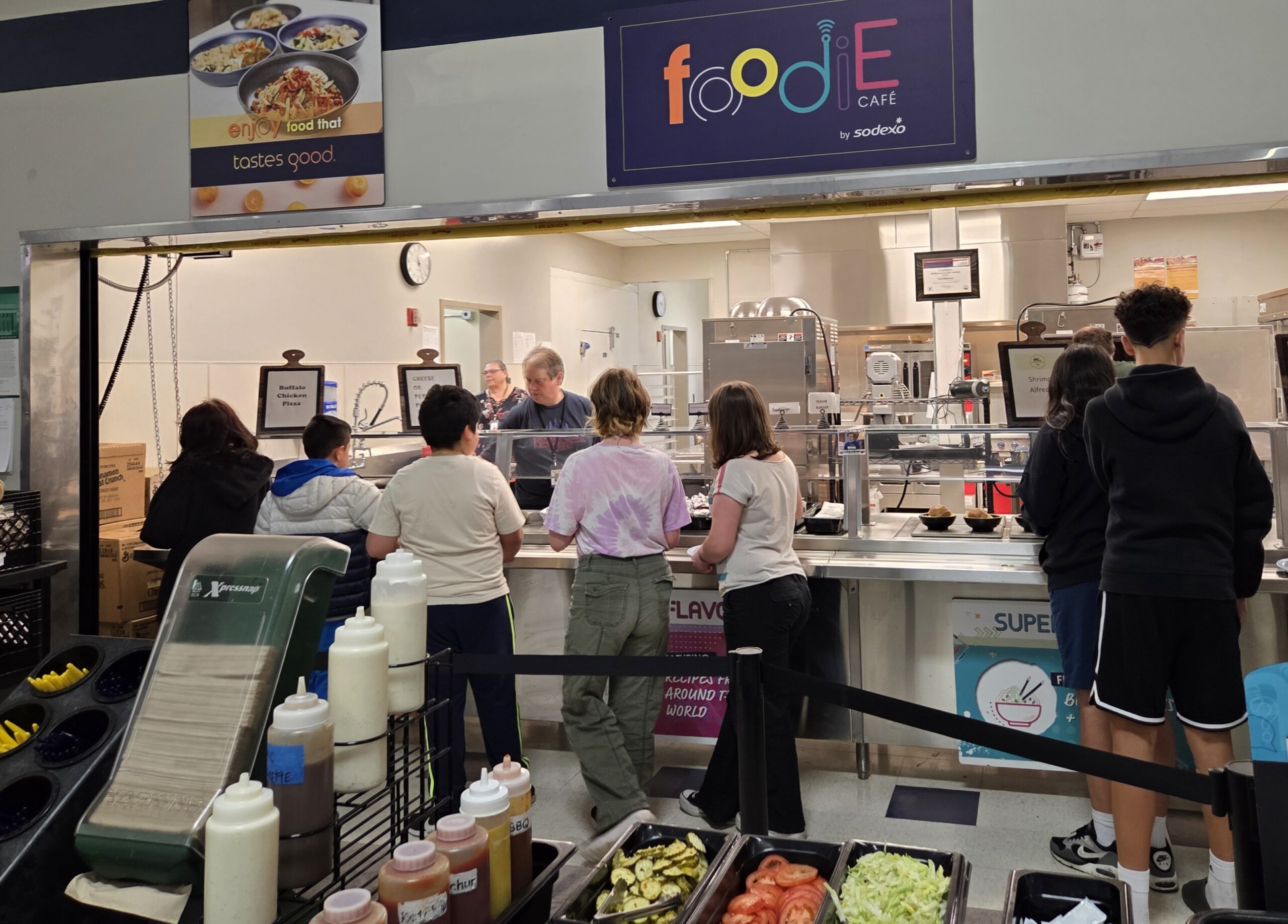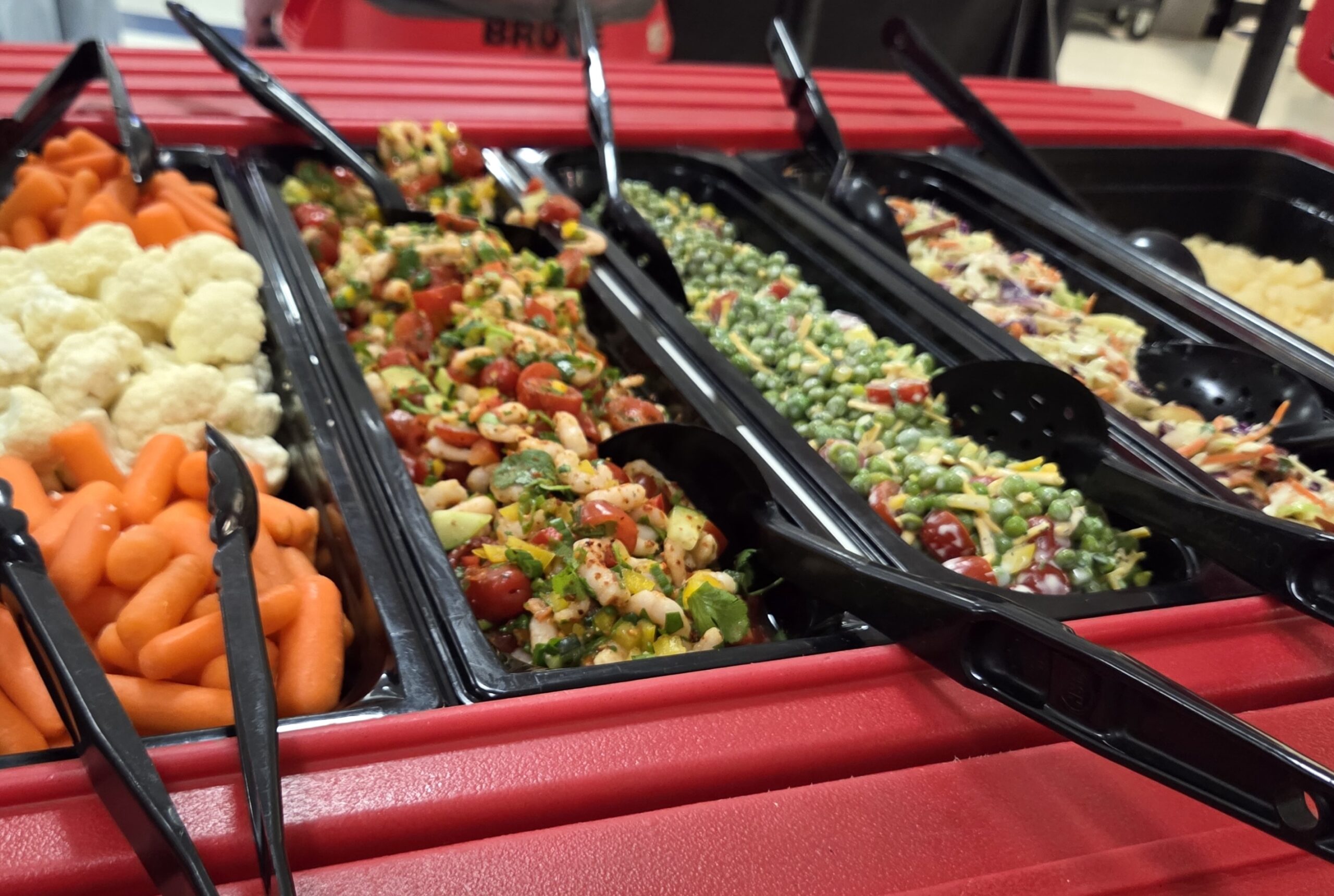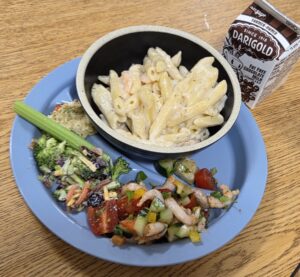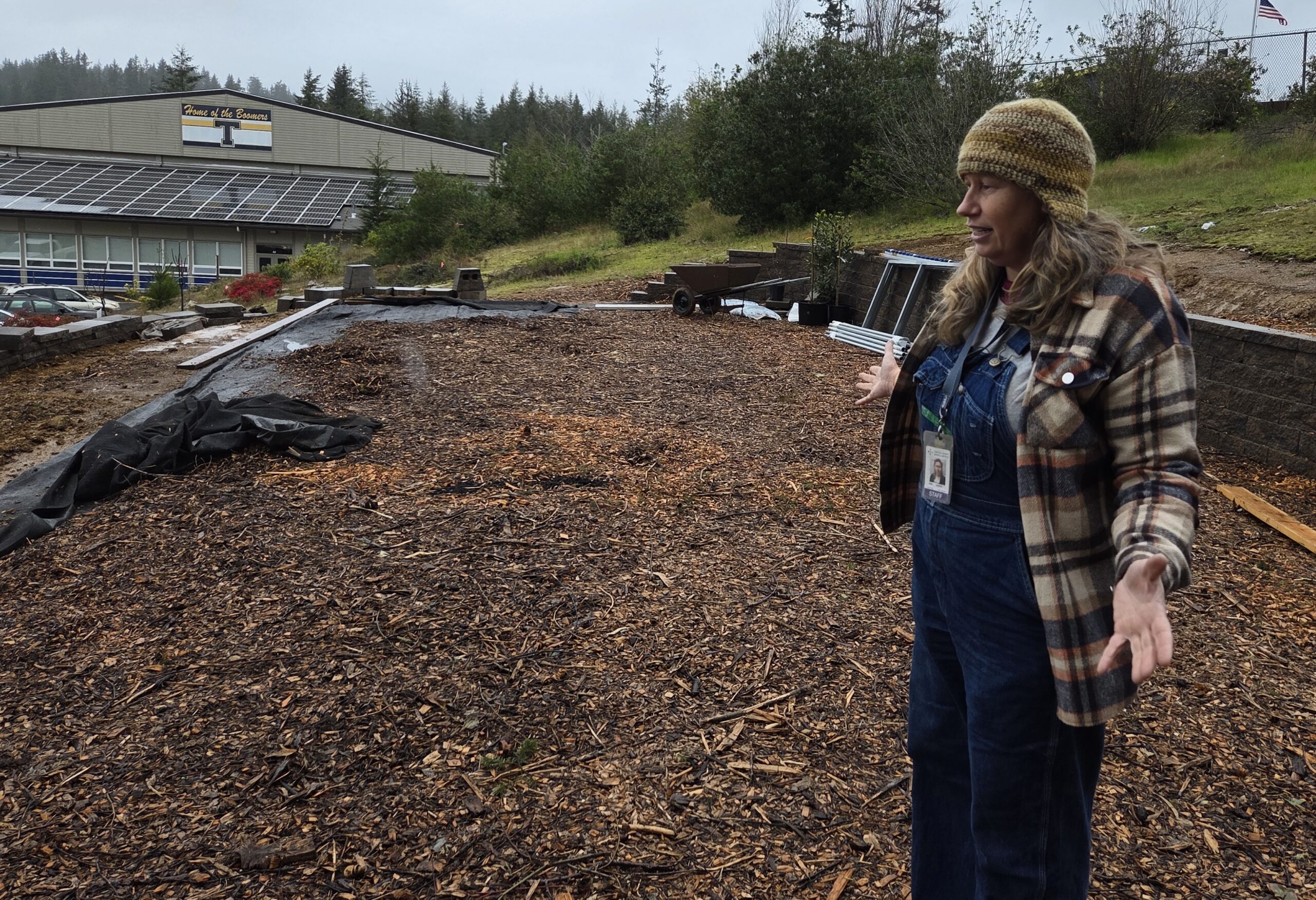
By SHAYLA ESCUDERO/Lincoln Chronicle
When the lunch bell rings, students eagerly scramble to Newport Middle School’s cafeteria and line up, plates in hand. There are the usual options – pizza, burgers and sandwiches. But there’s something else too – bowls of shrimp alfredo with bread and ceviche with chopped cilantro, tomatoes, and cucumber.
The dishes are part of Farm Fresh Fridays, a Lincoln County School District program that puts locally farmed or produced seafoods and meat in schools.

“I think the most eye-opening thing has been realizing that so many kids don’t get food like that, they don’t have access to those types of foods at home,” said Patty Graves, food services manager for Sodexo, the district’s food contractor.
School administrators say parents want more fresh food and less processed foods in school lunches. And the school district has been trying.
Using federal funds, they’ve been able to buy locally farmed and fished meats and seafoods for shepherd’s pie, beef stroganoff, grilled tuna sandwiches and pot roasts in cafeterias every other Friday. School lunches also have fruits and vegetables from school gardens.
But the program has an uncertain future, after schools across the country are facing cuts under the Trump Administration. The U. S. Department of Agriculture is cutting $1 billion to schools and food banks that have used the money to buy directly from local farms and producers.
The Local Food for Schools program, which is active in 40 states, will lose $660 million nationally. About $30,000 was set aside for the Lincoln County School District to bring fresh farm meats, produce and seafood across the district.
The cuts come during a time of uncertainty for programs that don’t just affect what kids are eating but what they are learning in the classroom. Local farmers and producers aren’t spared from the impact either.

Farm to table
At Newport Middle School’s salad bar, there’s ceviche made with shrimp from Pacific Seafoods and salad with lettuce and tomatoes fresh from the school’s garden. The dishes have herbs grown on school grounds both from the outdoor garden and the hydroponic tower inside the kitchen.
To principal Marty Pérez, the salad bar is a place where important conversations happen. Not only are kids sharing conversations about how their parents may work at Pacific Seafoods, but there is also a cultural exchange.
It gives kids a chance to talk about their culture. Ceviche is made and prepared differently across Latin American cultures, Pérez said.
“We are now starting to talk about food diversity in a meaningful way,” he said, “They are blending stories.”
The program only started this year.
In 2023, Oregon qualified to receive USDA funds, and the school district received $30,860 to purchase unprocessed goods for meals, according to superintendent Majalise Tolan.

The school district purchased beef and pork from Gibson Farms, Euchre Creek Farms, and Walker Farms in Siletz. They also purchased produce from Stahlbush Farms in Corvallis and dairy products from Spring Valley Dairy in Salem.
By combining the federal money with $42,000 of state farm-to-school funds, the program has also been able to purchase products from Pacific Seafoods and Tillamook Dairy along with other businesses, Tolan said. The funds also help fund school gardens.
For farmers, grants like the Local Food for Schools program help keep them afloat.
“Even on a one-time scale, often producers are relying on that larger scale sale throughout the year,” said Kaira Caruso, the “blue foods” coordinator at Central Coast Food Web in Newport.
The nonprofit helps facilitate and connect producers with programs like Local Food for Schools. For smaller-scale farms, it’s a service that helps make sales that wouldn’t have been possible since the organization helps bundle products from multiple local producers.
The organization helped bundle together this year’s school purchase for the three Siletz farms. “It was huge … it quite literally kept us through the winter,” said Sarah Walker of Walker Farms.
Grants like the one-time purchase of the farm’s pork for the school district help small farms prepare for the spring, she said.
Walker Farms didn’t plan on producing pork for the district next year but there are other grants in peril with USDA cuts.
A USDA program that supports the purchase of local food for food banks is also being cut.
Funds for existing agreements were unfrozen, Walker said, but they had to hurry to sign and get their paperwork in with the shorter deadline so that the Lincoln County Food Share would be able to purchase goods through the farm this year, she said.
Although Walker Farms has secured that grant for this year, as programs get cut, it’s difficult to plan.
“It’s truly a very stressful time to be a farmer,” she said.

More uncertainties
In a fenced garden behind Newport Middle School’s field, teacher Chris Martin carefully places soil over the rows of carrot seeds his students planted in a raised garden bed. Around him are blueberry bushes, strawberries, sage, apple trees and flower beds.
There is often a disconnect between kids, their food and realizing where it comes from, Graves said. At Newport Middle School, kids get to see how the food they helped grow ends up on their lunch plate.
Tomatoes and greens are used for the salad bar while spices and herbs are used in other dishes.
The garden is also an extension of the classroom.
“The reaction that I have from some kids is just like, I can’t get them to do a single thing in the classroom, but as soon as I put a shovel in their hand, they are ready to go, it gives them a sense of agency here at the school, a sense of belonging,” Martin said.
He teaches science technology engineering and mathematics elective courses that involve hands-on learning, and his classes are some of the most popular.
Having classes like that can help enrollment, said child nutrition program manager Jamie Nicholson. Because just that one class that kids want to go to school for puts them in the classroom for their other classes, she said.
Having a garden also gives kids access to things that they may not have at home, Nicholson said.
“We do have a high rate of homelessness, so we have families that will never be able to have their own garden,” she said. “We have low-income communities. We have a lot of food insecurities. This gives them the opportunity to have some control in their life.”
The gardens, the school lunches, the classroom, and the learning are all interconnected.

Learning across disciplines
At Toledo High School, the terraced hillside is a work in progress. Flattened soil, overturned wheelbarrows and rock will soon make way for a garden with hoop houses. Students have been heavily invested in the construction, with graduating seniors asking to come back to finish it, said district garden coordinator Sara Gibson, who wore a pair of overalls as she stood admiring rows of bricks laid by students.
“I try to integrate as many of the subjects that the schools are focusing on, math and measurement and temperature and seasons and soil nutrient cycling, anything we even, like, take the kids out and show them how it all fits practically,” Gibson said.
The effort has been collaborative across disciplines. One of the career and technical training classes made a large shed to house gardening equipment.
Yaquina View Elementary, Newport Middle School, and Sam Case Elementary have completed gardens and hydroponics. Toledo Elementary and Toledo High School are currently building gardens while Crestview Heights has a small garden. Waldport High, Oceanlake Elementary, and Taft Elementary do not have gardens.

The goal was to build a garden in every school using state funds. But with all the federal cuts, the governor will need to decide how to make up for state budget gaps, Nicholson said. She worries funding for school gardens would be used to plug in the holes.
Another program that ensures all children have access to free lunches may also be threatened. Congressional budget cuts threaten to tighten eligibility requirements for the community eligibility provision, which allows schools to serve free meals to all students.
“The free meals put everybody on the same page. That’s the biggest hit to our community, for our kids, and then for us, the extra paperwork is horrendous,” Nicholson said.
While this year all Lincoln County schools have been able to get local farm foods, the program faces an uncertain future.
“We just can’t do it without the extra funding,” Nicholson said.
- Shayla Escudero covers Lincoln County government, education, Newport, housing and social services for Lincoln Chronicle and can be reached at Shayla@LincolnChronicle.org


